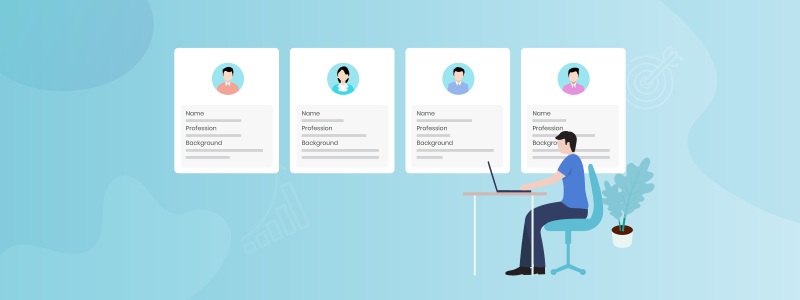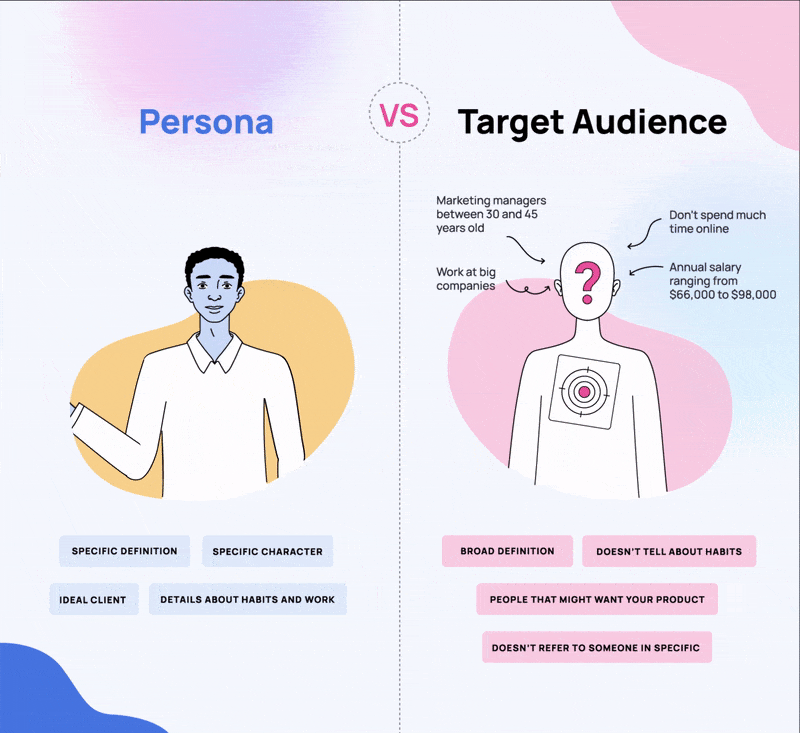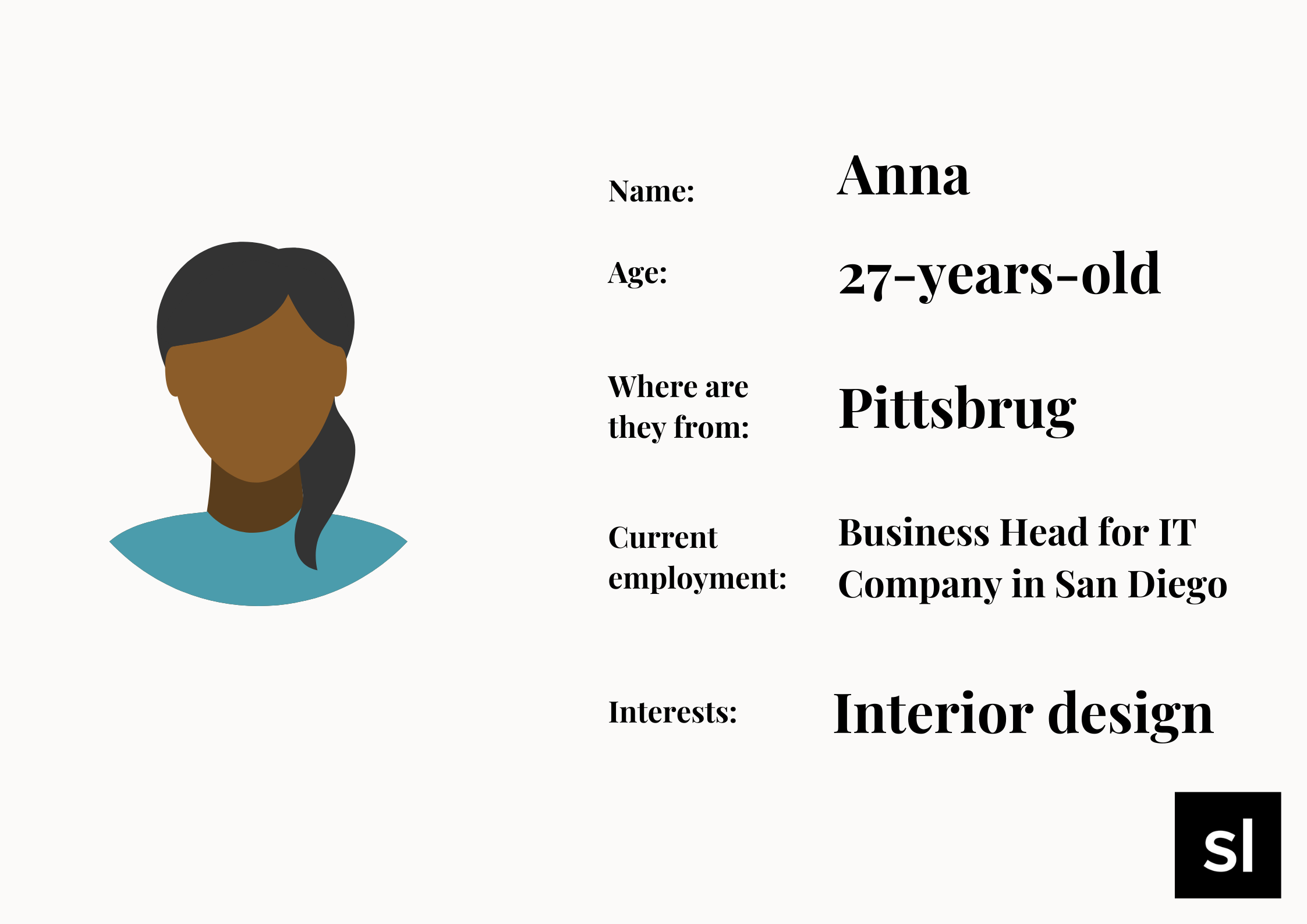
How to Effectively Increase Sales With the Right Buyer/Sales Persona
Last update: 12 April 2023 at 03:05 pm
How do you connect with your potential client? Why does a business require initial contact with customers? It’s because the company needs to build trust and gain loyalty from their future customers. The sales pitch plays a vital role in creating this trust with the target audience and converting them into happy customers.
Businesses no longer have a broad target audience. Marketing teams and sales professionals have narrowed their ideal client base depending on their age, gender, role, preferences, and other demographics.
This semi-fictional representation of prospective customers is known as the buyer or sales persona. It’s used by marketing, sales, product development, and customer service teams. Here are a few questions businesses often ask.
What is Persona in Business?
Persona, by definition, is a representation of one’s character that is represented by others. A persona essentially means a profile of a product’s target audience or an ideal client in a business. This client is their prospective customer.
What Do You Mean by Buyer and Sales Personas?
The marketing team carries out extensive market research to develop personas.
The buyer persona describes who the potential customers are, what their day looks like, their approach to problem-solving, and what influences their buying process.
Buyer personas help businesses understand their clients better and evaluate their situation. This also allows the company to serve and retain its current customers.

Importance of Buyer Personas
‘Trust’ is the keyword here. Your target audience will turn into existing customers only if they trust your business. People tend to trust open and transparent companies and give them the information they are looking for. A business needs to shift its perspective from seller-conscious to customer-friendly. This is why they develop buyer and sales personas.
How Are Buyer Personas Used?
The entire process of building a buyer’s persona is enlightening. The key aspect in using buyer personas is to compare results with colleagues, which might help you notice a few new things about your target audience. Some of the benefits of using a buyer persona include:
- A buyer persona helps achieve customer insight and gives you an idea of what your potential customer is looking for.
- Personas are used as a roadmap to achieve the right direction of work. It works for all departments in a company.
Who Uses Buyer Personas?
Product development teams can use buyer personas to build a product guideline. They refer to personas to identify and make necessary changes to their product to suit the customer’s needs.
Buyer personas can be used for inbound marketing as well. This marketing method is used to attract potential customers by providing valuable content and tailor-made experiences.
Keyword research, the crux of market research, is simplified, and hence writing compelling ad copies is easier. Buyer personas also help marketing efforts like promotional activities to be more effective.
Building strong communication with potential customers is the goal of the sales team. Buyer personas for sales help sales professionals achieve precisely this. Sales teams are prepared with what to expect when they interact with the target audience and deal with the pain points. This helps them prepare well, and the results are more effective.

Buyer personas also help customer support teams. Customers usually get in touch with customer support when products or services don’t work out as expected. Such customers are typically upset, and a little empathy at this time could go a long way. If customer support has access to buyer or sales personas, they’ll know exactly what to say to make them feel like royalty.
How Many Buyer Personas Can a Business Have?
Depending on the type of business you run, you could have as few as two or three personas or as many as fifteen or twenty-five. If you’re new to personas, you should start small. With time and experience, you can continuously develop more personas later if needed.
It’s not uncommon to have more than one or two buyer personas for a business. For instance, if the end-user of your product has to seek the approval of others before purchasing, each person involved in that decision is a separate persona by themselves.
The criteria for evaluating your product might differ for each individual, and you might need to implement different strategies to address those needs.
Should Small Businesses Invest in Building Buyer Personas?
It’s always better to have a complete picture before you draw conclusions that might affect your sales. This is why knowing your buyer before you dive into the sales cycle is essential. It’ll help you streamline your process without wasting your time and resources.
For example, you’re a diet consultant. You have a website and a blog to share tips and tricks for staying fit and eating healthy. You would want to attract customers who are interested in staying fit and eating nutritious meals. A buyer persona will help narrow your end-users.
You may find that the majority of your buyers are new mothers in their 30s. You can now finetune your website and blog content to target that specific age group and gender. This will make it easier to write ad copies for your website and select blog topics that will resonate with your target audience.
The bottom line is even if you’re a solopreneur or a new venture, you should invest in buyer and sales persona.
How Should One Create A Sales Persona?
Developing personas can be daunting and not as simple as it sounds, and yet it can be started by creating one persona at a time. This can be later branched to multiple personas for different types of customers. It’s a combination of internal and external research which includes many parameters and various steps as below.
Conduct Customer Interviews
For this, you need to speak with your customers. Communicating with customers who love your products is necessary, so you know how to convert new customers. It would be best to look for information that’ll help you build different personas for the sales representatives using them.
It would be best to ask demographic-based questions by calling customers or in person or even through online surveys.
Some people are more comfortable disclosing personal information over the internet. Offer a choice to your customers and make sure they know you’re not selling anything to them. You can also offer unique gifts to customers for giving their valuable opinion. Some of the information required for developing a buyer or sales persona include:
- Persona name
- Role
- Company information
- Industry/type of company
- Location
- Size
- Persona’s challenge/need
- Why is it important?
- Demographics
- Gender
- Age
- Location (i.e., suburbs, city, etc.)
- Family size
- Psychographics Personality
- Is the buyer outgoing, friendly, quiet, etc.?
- Decision-making criteria.
- Where does the buyer go to find solutions? Do they browse the internet on their mobile or laptop?
- What influences their decision-making?
- Communication habits: Technology used
Create a Buyer Persona Description
To create a buyer or sales persona template, it’s essential to add a description of what the buyer looks like. This, when added to the text, gives a personalized persona.
Details extracted from the above exercise are added as text. The text should read as Anna; a 27-year-old, from Pittsburg, is the business head for an IT company located in San Diego who has a particular interest in interior design.

Buyer Persona Card for the Sales Team
This will be a 1-page reference with a description and critical details of the persona. This card can be created in a Google doc and has vital information essential to generate qualified leads for the sales representatives.
Edit the Messages Sent to your Buyers by Sales Professional
The tone and content while using the persona should always be the same through different levels of communication. People using personae across departments to close deals should use the same tone for uniformity and proper execution.
What are Negative Personas?
Negative personas are the customer’s semi-fictional demographic details that are not ‘ideal’ for your business. Such a customer doesn’t buy your product, nor do they recommend your products. So why develop such personas?
- It saves valuable time and effort for the sales team. The sales team does not waste time contacting clients that aren’t interested in your product.
- The marketing budget is channelized towards the right buyer. When a company targets everyone, the marketing budget is blown out of proportion. This is why it’s crucial to know who not to talk to.
- Lastly, identify the negative persona. The sales and customer service team will have actual examples of different personas.
The marketing and sales team have to identify negative and positive personas. They need to speak with them, so they get the best results from both types of customers. It would help if you remembered that engaging with negative personas should be encouraged. These are customers that still follow you even though they aren’t buying from you. Regularly engaging with them may change their mind and help increase brand awareness, thereby improving sales for your business.





